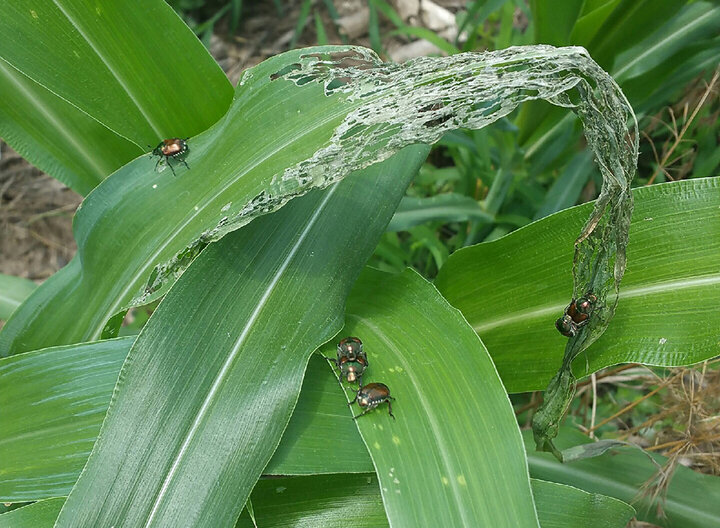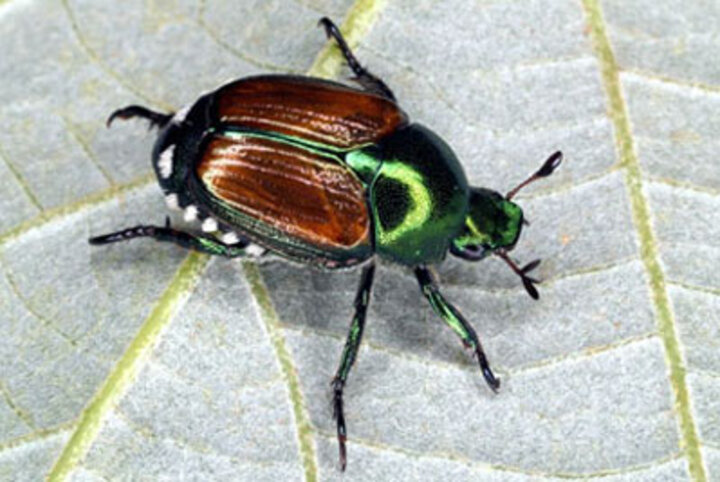
Japanese beetle adults are beginning to emerge in eastern Nebraska. Their distribution has been increasing in Nebraska the last few years and they are being seen in corn and soybeans more frequently (Figure 1), in addition to feeding on landscape trees and shrubs. They will continue to emerge for the next few weeks. They have one generation per year. They often feed in clusters, both because of attraction to the female sex pheromone, and they are attracted to volatile chemicals produced by damaged plants.

Newman)

Figure 3. Sand chafer, also known as the false Japanese beetle (Strigoderma arboricola)
Japanese beetles (Popillia japonica Newman, Figure 2) can contribute to defoliation in soybeans, along with a complex of other insects, such as bean leaf beetles, grasshoppers, and several caterpillar species. They feed by skeletonizing the leaves, leaving only the leaf veins. In soybeans insecticide treatment is recommended when insects are present and damage is expected to exceed 30% defoliation in vegetative stage, and 20% in reproductive stage soybeans. For more information see Managing Soybean Defoliators, NebGuide G2259.
Similar to corn rootworm beetles, Japanese beetles will scrape off the green surface tissue on corn leaves before silks emerge, but prefer silks once they are available. Japanese beetles feed on corn silks, and may interfere with pollination if abundant enough to severely clip silks before pollination. University of Illinois Extension recommends: "An insecticidal treatment should be considered during the silking period if:
- there are three or more Japanese beetles per ear,
- silks have been clipped to less than ½ inch, AND
- pollination is less than 50% complete."
Be aware that Japanese beetle numbers are often highest on field margins, so scout across the whole field before making a treatment decision. Japanese beetle adults are about ½ inch long and have a metallic green head and thorax. A key characteristic is a series of white tufts of hair on each side of the abdomen.
A variety of insecticides labelled on corn and soybeans would be expected to provide control of Japanese beetles. See product labels or the Insecticides for Field Crops section from Nebraska Extension EC130, for rates and restrictions.
In some cases people have mistaken the Japanese beetle for its look-alike, the false Japanese beetle, or sand chafer, Strigoderma arboricola, which is a native Nebraska insect found across most of the state. Sand chafers (Figure 3) are commonly found along the Platte River valley and other river valleys in Nebraska. False Japanese beetle adults are about the same size as Japanese beetles, but do not have a metallic green head. They may vary in color from coppery brown to black. They may have some white hairs on the side of the abdomen but they are not organized into tufts of hair.
They are often noticed because they have a habit of landing on people and seem to be attracted to people wearing light-colored clothing. They have not been reported to cause economic damage to crops as adults, although the immature white grub has been reported to cause damage to potato tubers.
